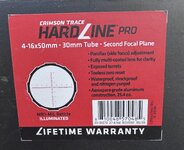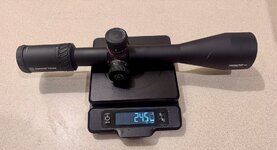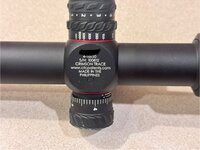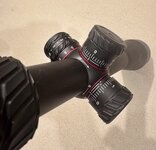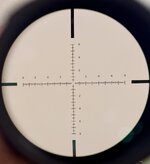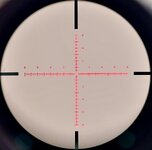Drop Evaluation RTZ and “Tracking”:
For an explanation see-
Scope Field Eval Explanation and Standards
The “test” consists of three 18” drops on a mat- one left/right/top with a shot to check zero after each drop. Then the exact same thing repeated from 36”. Then three drops on all three sides for nine drops on the last part- 15 drops total. This is not “abuse”. The 18” drops are a joke really. The 36” start showing something. And when a scope make/model consistently goes through the whole thing without losing zero, and makes it through the high round count portion, failures in actual use are almost unheard of.
This one was conducted on soft soil, with a 1/2 rubber padded mat top.
The rings were degreased and installed with 65 in-lbs on base screws, and 20-lbs on ring cap screws.
Ammunition used was Federal 168gr Tru. The 20 round proof group with this ammo was 1.2 MOA.
Zeroing:
Boresighted, fired one shot- above the right dot. Adjusted and fired 8 shots in the left dot. Adjusted down .1, and left .1 mils, and then shot one shot in the right dot- in the dot.
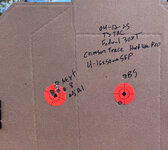
Drop eval:
No issues until the 9x36” drops.
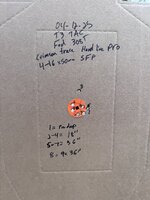
Went back to zero target and shot to confirm.
Top right dot is 5 round immediately flowing the drop eval- no adjustment.
Cane done .1 mils, and started the RTZ portion.
Return to zero:
Next a standard return to zero check was completed. This involves 200+ mils dialed between each shot for ten shots. RTZ was perfect.
 Adjustment value
Adjustment value (tracking):
Used the reticle to measure between the top and bottom dots at 6.8 mils.
Scope actually adjusted 6.6 mils for a 3% error-
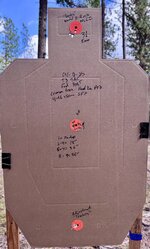
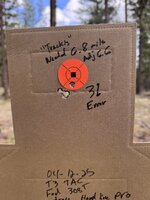 Initial conclusions:
Initial conclusions:
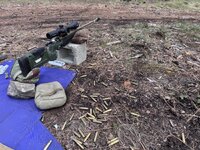
The scope only shifted POI on the 9x36” drops, and returned to functionally zeroed after the drops. RTZ was perfect, tracking value was off 3% or so. It is not likely that we will take this scope for 3,000 rounds- but it will be checked for s little bit on maintaining zero.
